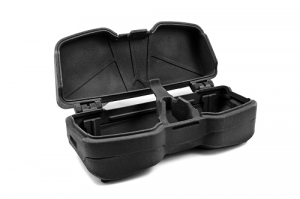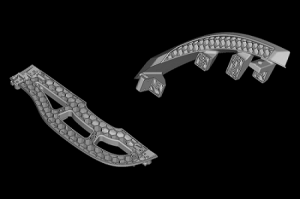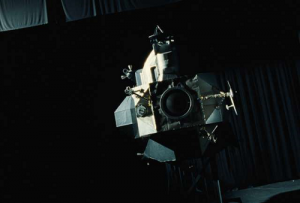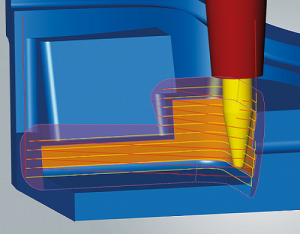Sinterit and 3D Herndon launch Lisa SLS 3D printers in the U.S.
3D Printing News Briefs: March 16, 2019
We’re starting with 3D software and medical 3D printing in today’s 3D Printing News Briefs, and then moving on to stories about some cool 3D printed projects. Sinterit has updated the software for its SLS 3D printers, and Deutsche Bahn is increasing efficiency with software solutions by 3YOURMIND. Medical 3D printing is on the rise in Sri Lanka. A designer whose work we’ve previously covered used Carbon technology to 3D print a unique pair of heeled shoes, and an Indian company used 3D printing to reduce the production time for a 6 ft superhero.
Sinterit Releases New Software Update
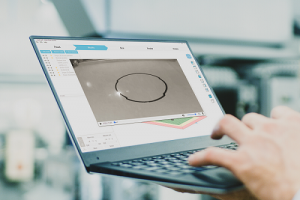 Desktop SLS 3D printer manufacturer Sinterit just released a new update for its Studio software, which all Lisa and Lisa Pro 3D printer users will now be able to access for a better consumer experience. The update gives these users a lot of positive changes, including more detailed and precise 3D printing with its PA11 Onyx and TPU Flexa materials and optimized slicing, which makes it easier and faster to manipulate models, while also using less RAM.
Desktop SLS 3D printer manufacturer Sinterit just released a new update for its Studio software, which all Lisa and Lisa Pro 3D printer users will now be able to access for a better consumer experience. The update gives these users a lot of positive changes, including more detailed and precise 3D printing with its PA11 Onyx and TPU Flexa materials and optimized slicing, which makes it easier and faster to manipulate models, while also using less RAM.
Sinterit has also made it possible to stream video via WiFi from its 3D printers’ cameras, so users can keep an eye on their prints remotely. In addition, the 3D printers now have an easier step-by-step guide on the screen to make the startup procedure smoother, and a new “About” button on the menu is helpful for optimized model preparation inside Sinterit Studio.
Deutsche Bahn Using 3YOURMIND Software Solutions
 German railway company Deutsche Bahn (DB) has been working hard over the last five years to continue developing its 3D printing division. Now, DB has joined industrial 3D printing software solutions provider 3YOURMIND in a strategic partnership in order to increase the efficiency of its 3D printing processes, and also determine possible 3D printing applications from around its company in order to assemble a digital spare parts warehouse. The Berlin-based company’s software platforms allow customers to exploit 3D printing potential with digital workflows, and 3YOURMIND supports DB’s ambition to expand its own additive manufacturing reach.
German railway company Deutsche Bahn (DB) has been working hard over the last five years to continue developing its 3D printing division. Now, DB has joined industrial 3D printing software solutions provider 3YOURMIND in a strategic partnership in order to increase the efficiency of its 3D printing processes, and also determine possible 3D printing applications from around its company in order to assemble a digital spare parts warehouse. The Berlin-based company’s software platforms allow customers to exploit 3D printing potential with digital workflows, and 3YOURMIND supports DB’s ambition to expand its own additive manufacturing reach.
3YOURMIND’s software will give DB employees access to a simple digital interface so they’re able to quickly submit new ideas for 3D printable parts based on applications they encounter every day. Then, the platform provides an analysis and identifies uses cases with the highest production potential, before DB experts shine a spotlight on the employees and choose the best projects to send into production.
Medical 3D Printing in Sri Lanka
 According to Dr. Rajitha Senaratne, the Health Minister for the South Asian island of Sri Lanka, 3D printing for health applications will now be available for the first time in the country beginning this month at the National Hospital of Sri Lanka (NHSL). Minister Senaratne made this announcement in Colombo – the country’s largest city – at the 26th Annual Scientific sessions of the College of Medical Administrators, stating that doctors can provide more personalized care by using modern technology like 3D printing.
According to Dr. Rajitha Senaratne, the Health Minister for the South Asian island of Sri Lanka, 3D printing for health applications will now be available for the first time in the country beginning this month at the National Hospital of Sri Lanka (NHSL). Minister Senaratne made this announcement in Colombo – the country’s largest city – at the 26th Annual Scientific sessions of the College of Medical Administrators, stating that doctors can provide more personalized care by using modern technology like 3D printing.
In conjunction with this announcement, RCS2 Technologies, the country’s sole 3D printer manufacturer with its Thrimána line, will be working with the country’s Ministry of Health to start up a 3D printed prosthetic manufacturing project.
3D Printed Generative Heels
 Talented designer Masaharu Ono, currently working for Japan’s DiGITAL ARTISAN.inc, is well-known for his creative 3D printed projects in both the fashion and technology worlds. Now he’s back in the fashion world with a 3D printed pair of high heels that you’ve got to see to believe. On the artisanal project “Generative Heel – Formless” for DiGITAL ARTISAN, Ono worked with casting company Castem, chemical manufacturer JSR, and 3D printing company Carbon to create the sky-high heels.
Talented designer Masaharu Ono, currently working for Japan’s DiGITAL ARTISAN.inc, is well-known for his creative 3D printed projects in both the fashion and technology worlds. Now he’s back in the fashion world with a 3D printed pair of high heels that you’ve got to see to believe. On the artisanal project “Generative Heel – Formless” for DiGITAL ARTISAN, Ono worked with casting company Castem, chemical manufacturer JSR, and 3D printing company Carbon to create the sky-high heels.
“This is concept model for mass customization, but I just getting ready, I will sell it as soon as possible,” Ono told 3DPrint.com.
3D Printed Window Spiderman
 An Indian manufacturing company by the name of STPL3D received an unusual order from a traditional fine arts manufacturer: an extremely detailed, 6-foot Spiderman sculpture for the opening of a new entertainment store. Typically, a project like this would take closer to two months, but STPL3D’s given deadline was just one week away. Using 3D printing, the company was able to complete it in just four days, which helped lower the cost and weight of the sculpture as well. Digital sculpting was used to modify an open source file to better fit the client’s needs.
An Indian manufacturing company by the name of STPL3D received an unusual order from a traditional fine arts manufacturer: an extremely detailed, 6-foot Spiderman sculpture for the opening of a new entertainment store. Typically, a project like this would take closer to two months, but STPL3D’s given deadline was just one week away. Using 3D printing, the company was able to complete it in just four days, which helped lower the cost and weight of the sculpture as well. Digital sculpting was used to modify an open source file to better fit the client’s needs.
“Our production team wanted to take full advantage of our array of 15 FDM machines so we could finish the project before the timeline, so we divided the 6 ft* 4 ft sculpture into 20 parts, then our post-processing team assembled the spiderman in 6-7 hours with plastic welding and glue to bring it in real shape that was required by the client,” Hardik Prajapati of STPL3D told 3DPrint.com.
“Post processing is always fun and all about teamwork. Our artistic and post-processing team played a major role in finishing the project that had matched our client’s expectation.”
Discuss these stories and other 3D printing topics at 3DPrintBoard.com or share your thoughts in the Facebook comments below.
Sinterit upgrades SLS software for improved 3D prints
How long do you need to wait for a desktop SLS 3D printer?
3D Printing News Briefs: October 20, 2018
We’re starting with some information about a couple of upcoming shows in today’s 3D Printing News Briefs, followed by some business and aerospace news. Sinterit is bringing its newly launched material to formnext, while Materialise has announced what products it will be presenting. Registration is now open for AMUG’s 2019 Education and Training Conference. Moving on, Sciaky sold its EBAM and EB Welding System to an aerospace parts manufacturer, while final assembly has been planned for the Airbus Racer, which features a 3D printed conformal heat exchanger. The Idaho Virtualization Lab is a leader when it comes to 3D printing dinosaurs, and the recently released movie First Man used 3D printed models during filming.
Sinterit Launches New PA11 Powder
Desktop SLS 3D printing company Sinterit has launched a new material – PA11 Onyx – which it will be bringing to formnext next month, along with its Lisa and Lisa 2 Pro 3D printers. According to Sinterit, this is first powder that’s ready for use in desktop SLS 3D printers, and it delivers excellent thermal, chemical, and abrasive resistance, along with better flexibility and impact resistance. PA11 Onyx is a high performance, lightweight, polyamide-11 bioplastic produced from plant-based renewable resources. In addition, the material also has high elongation at break, which means that durable finished products, like a military glass case and custom casings, can be opened and closed thousands of times without getting damaged.
“Our clients use a lot of electronic devices, like Raspberry Pi, that need a proper, individually made housing that can endure in unfriendly conditions. They are looking for durable materials but also require some elasticity and high-temperature resistance,” said Sinterit Co-Founder Konrad Glowacki. “PA11 Onyx delivers that.”
Come visit Sinterit at booth G41 in Hall 3.1 at formnext, November 13-16, to see its 3D printers and newly launched powders, which also include Flexa Black and Flexa Grey TPU materials.
Materialise Announces formnext Product Introductions
Speaking of formnext, 3D printing leader Materialise will also be attending the event in Frankfurt, and has just revealed what new product introductions it will be displaying at its booth C48 in Hall 3. Some of the highlights include new plastic and metal materials, like Inconel, Polypropylene, and Taurus, automotive applications, and the Materialise Magics 3D Print Suite; this last includes a new Simulation Module, the E-Stage for Metal 1.1 automatic support structure generation upgrade, and Magics 23, the latest software release.
Additionally, there will also be presentations from Materialise partners and the company’s own experts, like Lieve Boeykens, the Market Innovation Manager for Materialise Software. Boeykens will be presenting on the TCT Stage about “Reducing Costs and Speeding Up the Validation of AM Parts” on November 15 at 4 pm. Visit the Materialise formnext site for updates.
AMUG Conference Registration Open
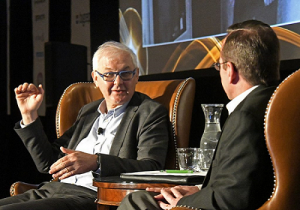 The Additive Manufacturing Users Group (AMUG) just announced that online registration is now open for its 2019 Education & Training Conference, which is now in its 31st year and will be held in Chicago from March 31-April 4. The conference is open to owners and operators of industrial 3D printing technologies for professional purposes, and welcomes designers, educators, engineers, plant managers, supervisors, technicians, and more to share application developments, best practices, and challenges in 3D printing. The program has been adjusted to include more hands-on experiences and training, and will include workshops, technical sessions, and even a new Training Lab. There will also be networking receptions, catered meals, the two-night AMUGexpo, a Technical Competition, and the fifth annual Innovators Showcase, featuring special guest Professor Gideon Levy, consultant for Technology Turn Around.
The Additive Manufacturing Users Group (AMUG) just announced that online registration is now open for its 2019 Education & Training Conference, which is now in its 31st year and will be held in Chicago from March 31-April 4. The conference is open to owners and operators of industrial 3D printing technologies for professional purposes, and welcomes designers, educators, engineers, plant managers, supervisors, technicians, and more to share application developments, best practices, and challenges in 3D printing. The program has been adjusted to include more hands-on experiences and training, and will include workshops, technical sessions, and even a new Training Lab. There will also be networking receptions, catered meals, the two-night AMUGexpo, a Technical Competition, and the fifth annual Innovators Showcase, featuring special guest Professor Gideon Levy, consultant for Technology Turn Around.
“As the AM community evolves, so will AMUG,” said Paul Bates, the President of AMUG. “We are excited to present the new program with the goal of continuing to act on our mission of educating and advancing the uses and applications of additive manufacturing technologies.”
Sciaky Sells EBAM and EB Welding System to Asian Aerospace Parts Manufacturer
Metal 3D printing solutions provider Sciaky, Inc. has announced that an unnamed but prominent aerospace parts manufacturer in Southeast Asia has purchased its dual-purpose hybrid Electron Beam Additive Manufacturing (EBAM) and EB Welding System. The machine will be customized with special controls that allow it to quickly and easily switch from 3D printing to welding. The system will be used by the manufacturer, remaining anonymous for competitive purposes, to 3D print metal structures and weld dissimilar materials and refractory alloys for said structures, as well as for other aerospace parts. Delivery is scheduled for the second quarter of 2019.
“Sciaky is excited to work with this innovative company. This strategic vision will allow this manufacturer to reduce operating costs by combining two industry-leading technologies into a single turnkey solution,” said Scott Phillips, President and CEO of Sciaky, Inc. “No other metal 3D printing supplier can offer this kind of game-changing capability.”
Airbus Plans Final Assembly for Racer
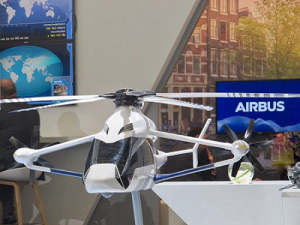
Scale model of the Airbus Racer on display at Helitech International 2018. The manufacturer is aiming for a first flight of the demonstrator in 2020. [Image: Thierry Dubois]
Together with partners of its Racer demonstration program, Airbus Helicopters explained that it definitely expects to meet performance targets, and complete the first flight of the compound helicopter on time in 2020. The 7-8 metric ton aircraft, in addition to a targeted cruise speed of 220 knots and 25% lower costs per nautical mile compared to conventional helicopters, will also feature several advanced components, including a three-meter long lateral drive shaft. Avio Aero was called in to 3D print a round, conformal heat exchanger for each later gear box, which will help achieve reduced drag.
The preliminary design review was passed last July, with final assembly targeted to begin in the fourth quarter of 2019. The flight-test program will likely be 200 flight hours, with the second part focusing on demonstrating that the Racer will be able to handle missions like search-and-rescue and emergency medical services. The program itself is part of the EU’s Clean Sky 2 joint technology initiative to help advance aviation’s environmental performance.
Idaho Virtualization Lab is 3D Printed Dinosaur Leader
 The Idaho Virtualization Laboratory (IVL), a research unit housed in the Idaho Museum of Natural History on the Idaho State University campus, has long been a leader in using 3D printing to digitize and replicate fossils and skeletons. Museum director Leif Tapanila said that IVL’s 3D printing program has been ongoing for the last 15 years, and while other labs in the country are more driven by research, the IVL is operated a little more uniquely – it’s possibly the only program in the US that goes to such great extent to 3D print fossils.
The Idaho Virtualization Laboratory (IVL), a research unit housed in the Idaho Museum of Natural History on the Idaho State University campus, has long been a leader in using 3D printing to digitize and replicate fossils and skeletons. Museum director Leif Tapanila said that IVL’s 3D printing program has been ongoing for the last 15 years, and while other labs in the country are more driven by research, the IVL is operated a little more uniquely – it’s possibly the only program in the US that goes to such great extent to 3D print fossils.
Jesse Pruitt, lab manager of the Idaho Virtualization Lab, said, “Everybody does a little bit of this and a little bit of that, but no one really does [everything we offer].
“We do our own internal research, we digitize our collections and we also do other people’s research as well.
“It’s not something you see at a smaller university. For this to exist at the level that it exists here is pretty remarkable in my mind.”
The IVL is also one of the only programs to have a large online database of the 3D models it creates, and works to spread knowledge about its 3D printing processes to students and researchers.
3D Printed Models for First Man Movie
While many movies swear by CGI to create special effects, there are some directors and production crews who still prefer to use old school miniatures and models. But old school meets new when 3D printing is used to make these models for practical effects. Oscar-winning director Damien Chazelle used some 3D printed miniature model rockets for his new movie First Man, which was just released a week ago and is all about Neil Armstrong and his legendary first walk on the moon. The movie’s miniature effects supervisor Ian Hunter, who won an Oscar for Visual Effects for Interstellar, was in charge of creating and filming the models, which included a one-thirtieth scale miniature for the giant Saturn V rocket and one-sixth scale miniatures of the Command/Service Module and Lunar Excursion Module.
“We had banks of 3D printers running day and night, running off pieces. We also used a lot of laser-cut pieces,” Hunter said about the Saturn V rocket miniature. “The tube-like shape of the rocket came from PVC piping, with the gantry made of acrylic tubing, along with many 3D printed and laser cut parts.”
The 3D printed model of the Saturn V rocket even made it into one of the trailers for the film, and the film itself.
Discuss these stories and other 3D printing topics at 3DPrintBoard.com or share your thoughts in the Facebook comments below.
3D Printing News Briefs: July 27, 2018
We’ve got plenty of awards and other business news for you today in 3D Printing News Briefs. Sinterit and ViscoTec each received awards for their technology, while Arkema announced that it is opening a 3D Printing Center of Excellence at its Pennsylvania facility. Vectary and Sketchfab are integrating, and Xometry is now offering SLA 3D printing. Finally, OPEN MIND Technologies has introduced its latest hyperMILL CAM software.
Sinterit Lisa Receives Award from All3DP
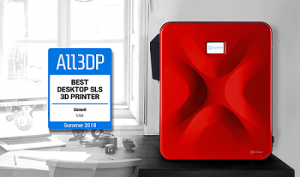 Sinterit, one of the fastest growing manufacturers of SLS 3D printers, just received the “Best Desktop SLS 3D Printer Summer 2018” award for its Lisa 3D printer by All3DP. The award shows that the company is moving in the right direction, and confirms that the Lisa is the perfect choice for 3D printing professionals looking to upgrade to SLS technology without breaking the bank. Even better for Sinterit: the award was announced in the final week of a pre-order period for its upgraded Lisa model, which will feature better hardware, bigger 3D prints, and easier maintenance.
Sinterit, one of the fastest growing manufacturers of SLS 3D printers, just received the “Best Desktop SLS 3D Printer Summer 2018” award for its Lisa 3D printer by All3DP. The award shows that the company is moving in the right direction, and confirms that the Lisa is the perfect choice for 3D printing professionals looking to upgrade to SLS technology without breaking the bank. Even better for Sinterit: the award was announced in the final week of a pre-order period for its upgraded Lisa model, which will feature better hardware, bigger 3D prints, and easier maintenance.
“All3DP is happy to present the Sinterit Lisa with the award for Best Desktop SLS 3D Printer on the market. We recognize the Sinterit team for their tremendous work in making SLS 3D printing technology more affordable and accessible,” said Tyler Koslow, Editor at All3DP. “Additionally, their recent update to the Sinterit Lisa and development of the new Sinterit Lisa 2 PRO suggests that they will remain a market leader for a long time.”
ViscoTec Awarded Special Title Two Years Running
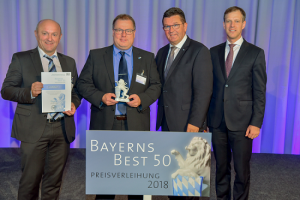
Georg Senftl (holding certificate) and Martin Stadler (holding lion) accepted the award on behalf of all ViscoTec employees.
For the second year in a row, German company ViscoTec, which specializes in pump and dose technology and has 3D printing viscous liquid products for silicone and other materials was awarded the “Bayern’s Best 50” title. For 17 years, the Bavarian Ministry of Economic Affairs has honored the 50 most dynamic, medium-sized companies in Bavaria, and the jury considers criteria such as number of employees, turnover, and social and economic contributions. ViscoTec, and the other 49 winning companies were personally awarded the title, a certificate, and a Bavarian porcelain lion by Bavaria’s Minister of Economic Affairs, Energy and Technology Franz Josef Pschierer at a recent event in Schleißheim Castle.
“Our employees all over the world actively help us to be such a successful company every day and that we will continue to develop very well in the future. Special thanks also go to our partners and customers. Their partnership with ViscoTec is constantly driving us forward. This motivates us not to stand still, to open up new possibilities and to find solutions for the daily challenges,” said Georg Senftl, Commercial Director of ViscoTec Pumpen- u. Dosiertechnik GmbH. “Last but not least, the innovative climate in the Inn-Salzach region contributes to the continuous development of companies like ViscoTec.”
Arkema to Open 3D Printing Center of Excellence
This Monday, July 30th, speciality chemical and advanced materials developer Arkema will be holding the grand opening for its new 3D Printing Center of Excellence. The center will be located at the Exton, Pennsylvania facility of its Sartomer subsidiary, which designs engineered resins for UV-curable additive manufacturing under its N3xtDimension brand. The 3D Printing Center of Excellence will work to advance 3D printing resins technology and be home to most UV-based 3D printing technologies, such as Digital Light Processing (DLP), stereolithography (SLA), and HP’s Multi Jet Fusion (MJF). It will offer a collaborative space for developing custom resins, and complete the company’s worldwide R&D network, which is dedicated to developing advanced 3D printing materials.
“Sartomer is a historic partner for 3D printing pioneers. We’re launching the 3D Printing Center of Excellence to deepen our support of the visionaries working to develop innovative 3D printed materials,” said Sumeet Jain, Global Director, 3D Printing at Sartomer.
Vectary Integrates Sketchfab
 Online 3D design tool Vectary is giving its users access to thousands of new 3D models, as it has now integrated Sketchfab, the world’s largest platform for interactive 3D content. Vectary users can connect to the Sketchfab library and import hundreds of thousands of 3D models with one click, as well as export, publish, and even sell their own 3D work on Sketchfab. Vectary CEO Michal Koor, who co-founded the tool in 2014 with Pavol Sovis said, “Easily importing Sketchfab 3D models in the Vectary 3D tool can be a great way to create design concepts and bring more inspiration to their work. Exporting their Vectary models to Sketchfab gets them exposure to a larger audience, which can mean an increased customer base and new income possibilities by selling their work on one of the best 3D marketplaces available.”
Online 3D design tool Vectary is giving its users access to thousands of new 3D models, as it has now integrated Sketchfab, the world’s largest platform for interactive 3D content. Vectary users can connect to the Sketchfab library and import hundreds of thousands of 3D models with one click, as well as export, publish, and even sell their own 3D work on Sketchfab. Vectary CEO Michal Koor, who co-founded the tool in 2014 with Pavol Sovis said, “Easily importing Sketchfab 3D models in the Vectary 3D tool can be a great way to create design concepts and bring more inspiration to their work. Exporting their Vectary models to Sketchfab gets them exposure to a larger audience, which can mean an increased customer base and new income possibilities by selling their work on one of the best 3D marketplaces available.”
Xometry Adds SLA 3D Printing to List of Services
 3D printing service provider Xometry has added stereolithography (SLA) 3D printing to the list of 3D printing processes it provides. Versatile SLA technology offers higher resolution 3D printing, which will allow Xometry’s customers to achieve prints with good surface finish and fine detail – perfect for production parts and prototypes. The technology also enables you to print large products and parts and can create complex parts, to meet tolerances of +/- 0.004” or +/- 0.001” per inch, in a single operation.
3D printing service provider Xometry has added stereolithography (SLA) 3D printing to the list of 3D printing processes it provides. Versatile SLA technology offers higher resolution 3D printing, which will allow Xometry’s customers to achieve prints with good surface finish and fine detail – perfect for production parts and prototypes. The technology also enables you to print large products and parts and can create complex parts, to meet tolerances of +/- 0.004” or +/- 0.001” per inch, in a single operation.
Xometry also offers plenty of SLA-friendly materials, such as the Accura and Somos brands. Try it out today – upload your 3D CAD file to Xometry now to get an instant SLA quote.
New Version of hyperMILL CAM Software Released
Germany CAD/CAM software solutions develop OPEN MIND Technologies AG has released the latest version of its advanced CAM software, hyperMILL 2018.2, which provides more machining efficiency and several new enhancements and features. 3D Z-level Shape Finishing, available in the hyperCAD -S module, now comes with automatic face extension to automatically extend selected milling surfaces during CAM programming, and can now also support conical barrel cutters.
This version also provides a “V sketch” command, which allows users to make easy changes to turning contours and milling boundaries by assigning geometric constraints to 2D contours. Other enhancements to the -S module include being able to measure and record distances between two shapes, like meshes, solids, and face models.
Alan Levine, Managing Director of OPEN MIND Technologies USA, Inc., said, “Keeping the hyperMILL suite at the forefront of CAM technology, we are pleased to offer our customers improved CAM strategies and enhanced CAD tools for even greater machining productivity through our new release of hyperMILL 2018.2.”
Discuss these stories and other 3D printing topics at 3DPrintBoard.com or share your thoughts in the Facebook comments below.
3D Printing News Briefs: July 17, 2018
In Today’s 3D Printing News Briefs, we’re covering a lot of business and a little medical news. AMFG is partnering with a top UK bearings manufacturer to help automate its digital manufacturing workflows, while Segula Technologies has begun an industrial 3D printing partnership with digital manufacturing company Multistation. Techniplas has completed a deployment of Sharebot 3D printers to its 14 manufacturing facilities around the world, and the winners of the SkillsUSA Additive Manufacturing Competition have been announced. Finally, a pediatric cardiologist used the Sinterit Lisa to create a 3D printed model of a newborn boy’s heart to plan his risky surgery.
Bowman International Announces Partnership with AMFG
Automation software specialist AMFG, which recently launched a new AI software platform, has partnered with Bowman International, one of the top bearings manufacturers in the UK, as it works to grow its 3D printing capabilities through its Bowman Additive Production (AP) division. Bowman AP has several MJF and SLS 3D printers available for its use, and uses 3D printing to design and produce its end-part bearings, which has helped increase their load bearing capacity by up to 70%.
In the meantime, Bowman International’s goal is to use AMFG’s AI-powered production automation software to oversee production of said bearings, by automating production job scheduling, optimizing digital CAD files for production with printability analyses, and creating a custom digital part catalog.
“We’re very pleased to be partnering with AMFG and using their automation software to scale our already expanding AM facility,” said Jacob Turner, the Head of Additive Production at Bowman International. “Additive manufacturing is transforming the way bearings are manufactured, and we aim to continue to be at the forefront of innovating the production of bearings using AM. AMFG’s automation software will enable us to achieve this by significantly increasing the efficiency of our production processes.”
Multistation Partners with Segula Technologies
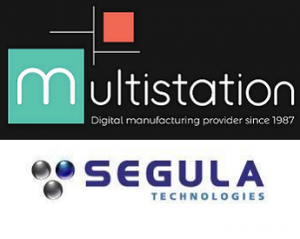 Another newly announced 3D printing partnership is the one between international engineering group Segula Technologies and Paris-based 3D printing company Multistation. The two are working together to further develop the potential of 3D printing in the industrial sector, which will allow both companies to increase their offerings and provide customers with excellent services along the AM value chain. Segula will bring its design, product-process qualification, and technology integration in industrial environments to the table, while Multistation will share and apply its expertise in AM design and simulation by determining any potential parts that could be 3D printed instead of fabricated with a more traditional method of manufacturing.
Another newly announced 3D printing partnership is the one between international engineering group Segula Technologies and Paris-based 3D printing company Multistation. The two are working together to further develop the potential of 3D printing in the industrial sector, which will allow both companies to increase their offerings and provide customers with excellent services along the AM value chain. Segula will bring its design, product-process qualification, and technology integration in industrial environments to the table, while Multistation will share and apply its expertise in AM design and simulation by determining any potential parts that could be 3D printed instead of fabricated with a more traditional method of manufacturing.
“Additive manufacturing is an integral part of a value chain within which Multistation provides a comprehensive offering; Segula Technologies was an obvious partner of choice to enable our Additive Consulting division to address manufacturers’ concerns more effectively,” said Yannick Loisance, the CEO of Multistation. “We will thus be able to supply them not just with software packages, machines and materials, but also with a more comprehensive range of high-quality engineering services that are suited to a host of different business sectors.”
Techniplas Adds Sharebot 3D Printers to Its Manufacturing Facilities
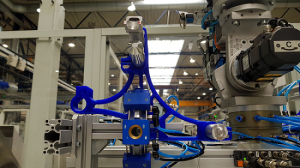 This fall, Italian professional-grade 3D printer manufacturer Sharebot joined the open innovation program at Techniplas, a top automotive design and manufacturing provider. Now, as part of its own continuing digital transformation, Techniplas has deployed Sharebot 3D printers to all of its 14 manufacturing facilities across five continents. This move will allow the company to 3D print the majority of the manufacturing products it uses every day on-site, which will equal major cost and time savings as Techniplas previously used only third-party providers for this task.
This fall, Italian professional-grade 3D printer manufacturer Sharebot joined the open innovation program at Techniplas, a top automotive design and manufacturing provider. Now, as part of its own continuing digital transformation, Techniplas has deployed Sharebot 3D printers to all of its 14 manufacturing facilities across five continents. This move will allow the company to 3D print the majority of the manufacturing products it uses every day on-site, which will equal major cost and time savings as Techniplas previously used only third-party providers for this task.
“With Sharebot 3D printers installed in all of our manufacturing facilities worldwide, we are taking decisive steps toward fabricating the majority of our manufacturing line assembly tools, jigs, fixtures, gauges and even robotic arm attachments in-house. Based on our experience with Sharebot printers thus far, we expect to significantly reduce our development time and annual assembly line tooling costs in each manufacturing facility over time,” said Techniplas COO Manfred Kwade.
Winners of the SkillsUSA Additive Manufacturing Competition Announced
 For the fourth year running, advanced manufacturing technology industry organization SME and Stratasys have co-sponsored the SkillsUSA Additive Manufacturing Contest, held during the annual SkillsUSA National Leadership and Skills Conference in Louisville. The winners of this year’s student contest, which asks contestants to solve real world problems with 3D printing, were just announced. This year, entrants had to design an adaptive device for a veteran, who had endured a traumatic thumb amputation, so he could keep playing his PlayStation 3. Prizes include RAPID + TCT conference passes, SOLIDWORKS’ 3D-CAD design software, SME Education Foundation scholarships (for high school participants), a one-year Tooling U-SME subscription, and a MakerBot Mini 3D printer.
For the fourth year running, advanced manufacturing technology industry organization SME and Stratasys have co-sponsored the SkillsUSA Additive Manufacturing Contest, held during the annual SkillsUSA National Leadership and Skills Conference in Louisville. The winners of this year’s student contest, which asks contestants to solve real world problems with 3D printing, were just announced. This year, entrants had to design an adaptive device for a veteran, who had endured a traumatic thumb amputation, so he could keep playing his PlayStation 3. Prizes include RAPID + TCT conference passes, SOLIDWORKS’ 3D-CAD design software, SME Education Foundation scholarships (for high school participants), a one-year Tooling U-SME subscription, and a MakerBot Mini 3D printer.
“The SkillsUSA contest is designed to help students and educators realize the power of additive manufacturing to drive innovation. This year’s competition was particularly meaningful as it directly resulted in enhancing a veteran’s life with a custom solution not possible without additive manufacturing,” said Gina Scala, the Director of Marketing, Global Education at Stratasys.
The high school winners include:
- Gold medal: Getty George and Sam Green, Martin Luther King High School, Riverside, California
- Silver medal: Noah Logan and Johnathan Urbani, Stafford Tech Center, Rutland, Vermont
- Bronze medal: Andrew Daddone and Layke Martin, Frederick County Career & Tech Center, Frederick, Maryland
The college winners include:
- Gold medal: Adolfo Vargas and Alexander Kemnitz, Central Community College-Hastings, Hastings, Nebraska
- Silver medal: Deema Al Namee and Aric Donerkiel, Vermont Technical College, Randolph Center, Vermont
- Bronze medal: William Swaner and Ashton DeZwarte, Tenneseee College of Applied Tech-Nashville, Nashville, Tennessee
Watch a video about the 2018 competition here, and check out the winning designs here; you can also view SME’s Flickr album for more competition photos.
Surgeon 3D Prints Pediatric Heart Model with Sinterit Lisa
 Desktop SLS 3D printer manufacturing Sinterit has seen its flagship Lisa 3D printer, which went through a recent upgrade, used to save lives in multiple ways, from fighting wildfires and protecting the faces of children to providing assistance in a tough pediatric cardiac surgery.
Desktop SLS 3D printer manufacturing Sinterit has seen its flagship Lisa 3D printer, which went through a recent upgrade, used to save lives in multiple ways, from fighting wildfires and protecting the faces of children to providing assistance in a tough pediatric cardiac surgery.
“Delivering desktop SLS 3D printer for more than three years caused that our clients send us tonnes of useful and exciting cases. Writing about all of them is hard, if not impossible, but when 3D printing helps saving lives, especially those most fragile, we feel proud, and also a duty to share it with you,” Michał Krzak, Sinterit’s Marketing Communication Manager, told 3DPrint.com.
A newborn’s heart can weigh barely 20 grams, and fits in the palm of an adult’s hand, so you can imagine that surgeries on such a delicate organ are exceedingly difficult. Jarosław Meyer-Szary, MD, from the Department of Pediatric Cardiology and Congenital Heart Defects at the University Clinical Center in Poland recently turned to Sinterit’s Lisa 3D printer to save the life of Kordian, an infant less than one month old suffering from a potentially fatal heart disease called interrupted aortic arch.
Meyer-Szary created 3D printed, life-size model of Kordian’s tiny heart, and SLS technology was able to recreate each intricate artery and vein. The model not only helped him plan the surgery ahead of time, but also helped Kordian’s mother gain a more thorough understanding of her son’s condition. Kordian is now a thriving and happy 18 month-old, thanks to Sinterit’s SLS technology.
Discuss these stories and other 3D printing topics at 3DPrintBoard.com or share your thoughts in the comments below.
Sinterit releases a new generation of LISA SLS 3D printers, the LISA 1.5
3D Printed Designs Highlight the Miss South Africa Pageant
 Recently, the Miss South Africa pageant took place. The winner was 23-year-old medical student Tamaryn Green, but the 2011 winner, Melinda Bam, also had a place in the spotlight this year. Since winning the title seven years ago, Bam has gone on to found her own swimsuit line, called Bambshell, which provided the swimsuits for this year’s competition. Bambshell designer Ciska Bernard created a series of beautiful, elegant bikinis with a special touch – 3D printed flowers.
Recently, the Miss South Africa pageant took place. The winner was 23-year-old medical student Tamaryn Green, but the 2011 winner, Melinda Bam, also had a place in the spotlight this year. Since winning the title seven years ago, Bam has gone on to found her own swimsuit line, called Bambshell, which provided the swimsuits for this year’s competition. Bambshell designer Ciska Bernard created a series of beautiful, elegant bikinis with a special touch – 3D printed flowers.
The flowers were 3D printed with Selective Laser Sintering technology using the Sinterit Lisa, the first desktop SLS 3D printer created by Sinterit in 2015. The versatile Lisa has been used for everything from medical devices to firefighting tools, and lends itself well to 3D printed fashion, as it turns out. The flowers to be attached to the swimsuits needed to be extremely lightweight and flexible – like “a second skin,” according to Sinterit. Build Volume, the service bureau that 3D printed the flowers, used Sinterit’s Flexa Black TPU material, which provided the smooth, lightweight properties the flowers required.
“Most of our clients use hard materials like PA12. It becomes a standard for a broad range of industries. But fashion needs more flexible solutions. It is not so easy to find a dependable, flexible material that would be a perfect match for the fashion industry and available for 3D printers. But as several years ago only a few people believed that SLS technology could become a desktop solution, available for every company, now we would like to go forward with the range of materials,” said Konrad Głowacki, one of the Sinterit Co-Founders. “After months of testing, we are happy to provide two reliable products: Flexa Black and Flexa Gray.”
The delicate flowers show how far 3D printed fashion has come in recent years. It hasn’t been long since 3D printed fashion was mostly stiff and bulky and unwearable outside the runway, but advances in 3D printing have allowed designers to create small, lightweight and subtle 3D printed touches to fabric as seen at Miss South Africa – and even fully 3D printed ensembles as seen at Miss Globe 2016.
“Due to the fast development of 3D printers, 3D scanners, and modeling software, 3D printing is becoming more and more exciting and affordable for personal users,” said Don Vermeulen, the CEO of Build Volume. “With 3D printing, ‘everything’ is possible.”
The swimsuits nicely complemented the other clothing worn by the Miss South Africa contestants, a collection of Afrocentric designs.
“The contestants showed off the Afrocentric Beauty collection which showcases the colorful complexities of African culture in a celebration of color and bold prints,” said Bam. “Each print is custom designed for this range and incorporates a mix of ethnic, tribal and modern prints on voluminous capes, juxtaposed against the sleek silhouettes of the swimsuits.”
Beauty pageants are, obviously, all about beauty – not just of the contestants, but of the clothing that they wear. Each piece is carefully selected and designed to impress viewers. It’s hard to add too much to a bikini to make it truly unique, but the 3D printed flowers of this year’s collection were the perfect addition, made possible by SLS technology.
Sinterit recently introduced the Lisa 2 Pro, a benchtop 3D printer with a larger build volume, easy operation and new, intuitive software. The 3D printer is expected to begin shipping in September of this year.
Discuss this and other 3D printing topics at 3DPrintBoard.com or share your thoughts below.
[Images provided by Sinterit]

